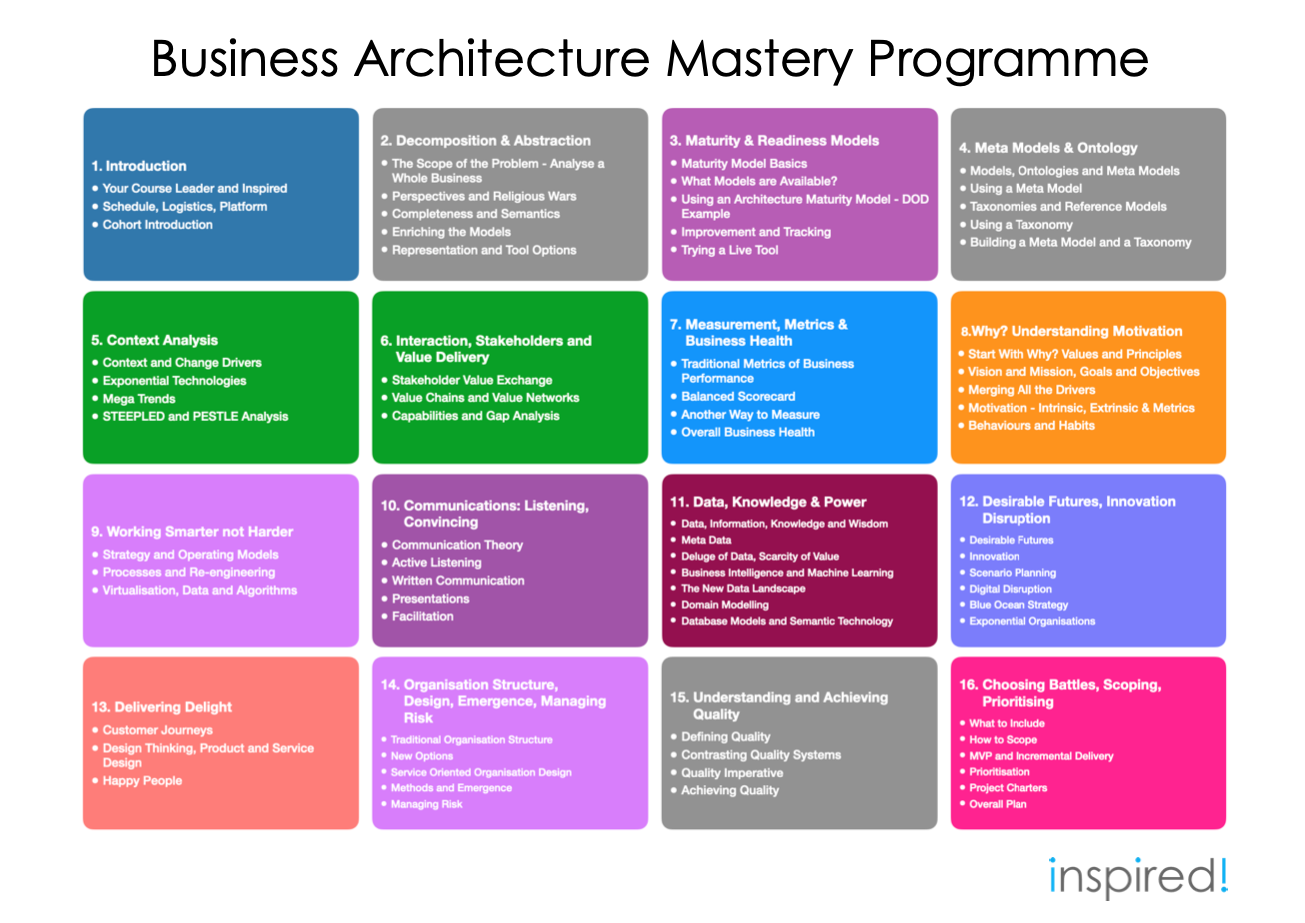This quote is attributed to one of our favourite great thinkers, Alan Kay, founder of Object Orientation, Graphical User Interfaces and other major innovations. We believe it applies to Business Architecture in a major way.
Most Business Architecture methods/approaches/languages (TOGAF®, BizBok, Archimate®...) originated from an Information Systems/Technology perspective. This is reflected in their view of concepts relevant to the business, which typically include: Organisation (Actor, Role), Process, Service, Capability, Motivation (Driver, Goals, Objective), Metric, Function and Contract. In their latest incarnations they may also recognise Value Chains and Course of Action. The former does relate to the position of the organisation in its industry, while the latter relates to high level change/initiatives.
What is typically missing, in our view, is consideration of the context in which we operate in a serious way. The context includes: Competitors, Product and Service Offerings, Legal and Compliance Environment, Technology, Political Climate, Society, Various Stakeholder Groups (Customers, Agents, Suppliers, Channels, Business Partners, Unions, Regulators, Industry Bodies…) and the Value we exchange with them, the Economy, Resources, Ecology, etc. all of which can provide Opportunities and Threats.
A thorough approach should contemplate these issues. There is no point designing a great new internal combustion engine vehicle in a world where legislation and public sentiment will prevent us selling it. There is no point devising a strategy where there are no resources to realise it. There is no point launching a physical record company into a media space that has gone fully digital (unless we want to be a niche player).
Being fully cognisant of our context helps us be much more intelligent about our strategy, our architecture and the resultant initiatives.
TOGAF® and Archimate® are Registered Trademarks of The Open Group. BizBok is a publication of the Business Architecture Guild.



